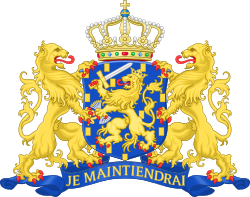This article needs additional citations for verification .(September 2018) |
Theo Heemskerk cabinet | |
|---|---|
| Cabinet of the Netherlands | |
| Date formed | 12 February 1908 |
| Date dissolved | 29 August 1913 (Demissionary from 26 June 1913) |
| People and organisations | |
| Head of state | Queen Wilhelmina |
| Head of government | Theo Heemskerk |
| No. of ministers | 9 |
| Ministers removed | 7 |
| Total no. of members | 14 |
| Member party | 12 February 1908 – 27 July 1909 Anti-Revolutionary Party General League Independent Catholics 27 July 1909 – 29 August 1913 Anti-Revolutionary Party General League |
| Status in legislature | Centre-right Minority government (12 February 1908 – 27 July 1909) Centre-right Majority government (27 July 1909 – 29 August 1913) |
| History | |
| Election | 1909 election |
| Outgoing election | 1913 election |
| Legislature terms | 1905–1909 1909–1913 |
| Incoming formation | 1907-1908 |
| Outgoing formation | 1913 |
| Predecessor | De Meester cabinet |
| Successor | Cort van der Linden cabinet |
| Part of the Politics series |
 |
|---|
| |
The Theo Heemskerk cabinet was the cabinet of the Netherlands from 12 February 1908 until 29 August 1913. The cabinet was formed by the political party Anti-Revolutionary Party (ARP) and the General League of Roman Catholic Electoral Associations (AB) following the fall of the De Meester cabinet 21 December 1907. The centre-right cabinet was a minority government in the House of Representatives but was supported by Independent Catholics and Independent Protestants for a majority. After the election of 1909 the Anti-Revolutionary Party and the General League of Roman Catholic Electoral Associations received a plurality of the votes and the cabinet could continued to govern as a majority government from 27 July 1909. Theo Heemskerk of the Anti-Revolutionary Party was Prime Minister. [1]













